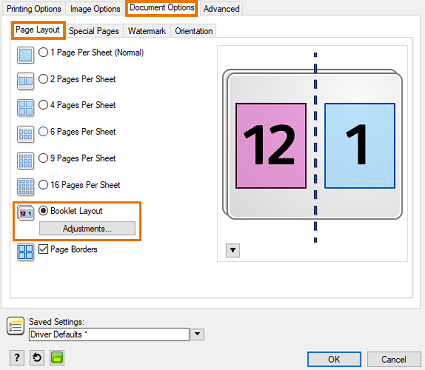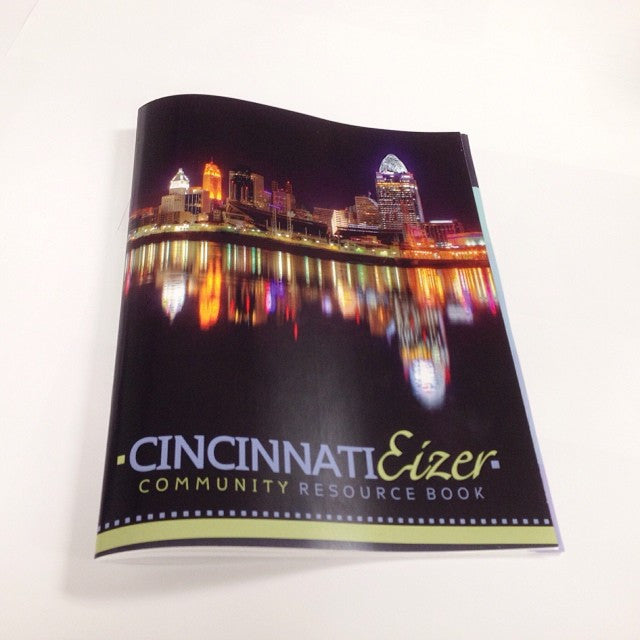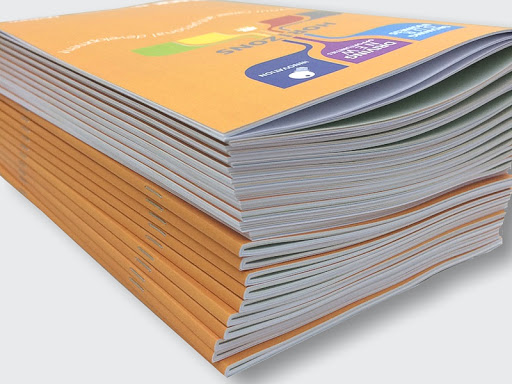The Vital Guide to Understanding Booklet Printing Options and Techniques
The procedure of booklet printing involves multiple factors to consider that can considerably impact the final item. From choosing the ideal style and dimension to comprehending the subtleties of binding approaches, each choice plays a crucial duty. Furthermore, factors such as paper supply and printing techniques further affect the effectiveness of the pamphlet. As one browses these choices, it becomes crucial to grasp just how they adjoin and what that suggests for the overall end result.
Understanding Brochure Sizes and formats
When considering booklet printing, comprehending the different layouts and sizes readily available is essential for attaining the wanted discussion. Brochures can be produced in numerous formats, consisting of saddle-stitched, spiral-bound, and perfect-bound, each offering unique advantages. Common sizes vary from conventional letter (8.5 x 11 inches) to smaller sized choices like A5 (5.8 x 8.3 inches), enabling adaptability based on content and target audience.Selecting the appropriate size can affect both the format and viewers engagement. Bigger sizes could match visually driven content, while smaller layouts might be a lot more mobile and easy to use. Additionally, the number of pages impacts the option of binding method, as thicker brochures might call for sturdier bindings. Ultimately, recognizing these aspects enables a more customized approach, ensuring that the end product lines up with the intended message and aesthetic, boosting the general efficiency of the interaction.
Picking the Right Paper Stock

Binding Methods: Alternatives and Considerations
When it concerns binding approaches for brochures, several alternatives are readily available, each with distinct advantages. Saddle stitch binding offers a cost-efficient service for thinner booklets, while excellent binding strategies supply a more polished look for thicker publications. Wire-O binding stands apart for its sturdiness and simplicity of use, making it optimal for records that require adaptability.
Saddle Stitch Binding
Saddle stitch binding offers a affordable and functional solution for constructing pamphlets, making it a prominent option amongst services and authors. This binding approach entails folding sheets of paper in fifty percent and stapling them along the fold line, creating a neat and well organized look. Commonly ideal for booklets with a reduced web page count, saddle stitching is perfect for publications, pamphlets, and instructional products. The simplicity of this technique permits quick manufacturing and is commonly favored for brief runs or advertising items. However, it is essential to keep in mind that saddle stitch binding might not be appropriate for thicker brochures, as the spinal column might not stand up under boosted weight. In general, it remains a reliable alternative for several printing tasks.
Perfect Binding Strategies
Perfect binding is an extensively made use of method that supplies a refined and professional coating to pamphlets and magazines. This approach involves gluing the pages with each other at the spine utilizing a solid adhesive, permitting for a clean edge and the capability to hold a bigger variety of pages contrasted to saddle stitching. Perfect binding is specifically ideal for thicker brochures, such as directories and annual reports, where a sturdy, flat back is wanted. In addition, it supplies the option for a published cover that can be created to boost aesthetic appeal. Considerations such as page count, paper weight, and the planned usage of the pamphlet need to be taken right into account, as they can impact sturdiness and general high quality.
Wire-O Binding Options
Wire-O binding, recognized for its longevity and flexibility, supplies an excellent option for brochures that need simple web page transforming and an expert look. This binding technique employs a collection of metal loops that hold pages safely, allowing them to lie flat when open. It is specifically suitable for brochures, presentations, and handbooks because of its durable nature. Wire-O binding is readily available in numerous colors and sizes, suiting different page matters and thicknesses. Additionally, it permits the inclusion of covers and tabs, enhancing the booklet's overall visual. Factors to consider for Wire-O binding include the choice of cord color, the size of the loops, and the extent of modification preferred, all of which can profoundly affect the end product's look and performance.
Digital vs. Offset Printing: Which Is Best for You?
When choosing a printing approach for booklets, understanding the distinctions between electronic and balance out printing is vital. Digital printing uses modern-day innovation to produce top notch prints quickly and economically, making it excellent for short runs or projects calling for fast turnaround times. It enables personalization, providing the capacity to print on-demand with marginal waste.In comparison, balance out printing is a traditional approach that excels in generating big amounts with consistent top quality. It entails transferring ink from a plate to a rubber blanket, after that to the paper, which leads to lively shades and exact information. Offset printing commonly requires longer setup times and is a lot more economical for bigger volumes.Ultimately, the option between electronic and offset printing depends on job requirements, budget, and preferred amount. For little, time-sensitive projects, electronic informative post may be the best option, while countered may be more effective for bigger, premium manufacturings.

Designing Your Brochure: Tips and Ideal Practices
When making a pamphlet, mindful attention to design, font choice, and color use can significantly boost its effectiveness. A well-structured format guides the visitor's eye, while suitable fonts guarantee readability and share the wanted tone. Additionally, effective usage of color can stimulate emotions and highlight crucial info, making the overall style extra impactful.
Picking the Right Format
How can one efficiently choose the appropriate layout for a brochure? It is important to examine the pamphlet's purpose and target audience. A tidy, arranged layout enhances readability and interaction. Using a grid system can assist in aligning components regularly, creating an expert look. Additionally, incorporating visual power structure via varying dimensions and placements of pictures and message can direct the reader's eye and stress key information. It is likewise important to leave adequate white room, which avoids overcrowding and enables better emphasis. Evaluating various formats via mock-ups can give understanding right into just how the style executes in real-world scenarios, making certain that the final item fulfills both aesthetic and useful needs. Useful Choosing Proper Typefaces
A well-chosen typeface can considerably improve the total style of a brochure, matching the format and strengthening the web content's message. The selection of font styles need to think about readability, especially for body text, as it guarantees the info comes to all visitors. Sans-serif font styles are commonly preferred for electronic styles, while try this site serif typefaces can offer a standard feeling in printed materials. It's suggested to limit font selections to two or 3 to maintain aesthetic coherence. In addition, typeface size plays a crucial duty; headings should be distinct but not overwhelming, while body text should fit for analysis. When picking fonts, placement with the booklet's motif and target audience is necessary for effective interaction and visual appeal.
Effective Use Shade
Color functions as an effective device in brochure design, guiding and shaping assumptions reader emotions. It can stimulate feelings of excitement, trust, or calmness, depending on the tones selected. Designers should think about shade theory principles, making certain that the picked combination aligns with the pamphlet's message and target market. As an example, making use of warm shades like red and orange can create urgency, while cooler tones like eco-friendly and blue foster tranquility.Additionally, contrast plays a vital function; corresponding shades can enhance readability and aesthetic allure. Consistency in shade use throughout web pages further strengthens brand identification and communication. Ultimately, effective shade application not only catches attention yet additionally reinforces the brochure's purpose, making it an important aspect of successful layout.
Completing Touches: Coatings and Unique Results
While many think about the web content and design of a pamphlet one of the most essential components, the finishing touches, such as coatings and special impacts, play an important function in enhancing its general charm. Coatings can supply security and longevity, making sure that the pamphlet holds up against deterioration. Matte coatings provide a sophisticated, non-reflective surface area, while glossy coverings can make colors show up more appealing and dynamic. Unique effects, like embossing or aluminum foil stamping, add a responsive measurement that can create a remarkable impact. These techniques can highlight specific areas, attracting focus to essential details or developing aesthetic interest. In addition, UV covering can offer a high-shine finish that raises the general look.Together, these completing touches not just boost the booklet's visual however also communicate expertise and focus to information, inevitably leaving a long-term influence on the viewers.
Cost Factors To Consider for Booklet Printing
Recognizing the different price factors to consider for booklet printing is necessary for companies and companies intending to optimize their budgets. Trick elements influencing prices consist of the selection of paper, binding, and ink methods. Greater high quality materials, such as exceptional paper or specialized inks, normally increase the overall cost. Additionally, the dimension and web page matter of the pamphlet play a considerable function; bigger brochures call for more resources and time to produce.Another essential factor to consider is the printing technique, whether electronic or offset, as each has its very own rates structure and viability description for different amounts. Organizations ought to also consider style costs, which can vary based upon complexity and making use of expert solutions. Inevitably, shipping and handling charges can include to the total amount, especially for large orders. By reviewing these components, organizations can make enlightened decisions that straighten with their economic capabilities while accomplishing the wanted quality in their published materials.
Often Asked Concerns
What Are the Environmental Impacts of Pamphlet Printing?
The environmental impacts of booklet printing consist of logging from paper manufacturing, carbon discharges from transportation, and waste generation from discarded products - Booklet Printing. Sustainable practices, such as using recycled paper and environmentally friendly inks, can alleviate these impacts
How Can I Make Certain Shade Precision in My Booklet?
To ensure shade precision in a booklet, one must use calibrated screens, utilize specialist shade profiles, perform test prints, and select high-grade printing solutions that supply shade matching and proofing options for ideal outcomes.
What Is the Regular Turnaround Time for Brochure Printing?
The regular turnaround time for booklet printing varies depending upon the complexity and amount - Booklet Printing. Normally, it varies from a few days to two weeks, influenced by elements such as publishing techniques and ending up needs
Are There Minimum Order Quantities for Pamphlet Printing?

Can I Publish Booklets in Multiple Languages?
Printing pamphlets in numerous languages is possible. Lots of printing solutions supply alternatives for multilingual or bilingual formats, permitting for effective communication. Cautious preparation warranties that develop components accommodate different languages without compromising readability or aesthetics. Additionally, aspects such as paper stock and printing techniques additional influence the effectiveness of the brochure. When thinking about booklet printing, understanding the different layouts and dimensions offered is essential for achieving the desired presentation. When choosing a printing technique for pamphlets, comprehending the differences between electronic and counter printing is crucial. In addition, the dimension and web page matter of the pamphlet play a considerable duty; larger brochures call for even more sources and time to produce.Another vital factor to consider is the printing method, whether electronic or offset, as each has its very own rates framework and suitability for various quantities. The ecological effects of pamphlet printing include logging from paper manufacturing, carbon emissions from transport, and waste generation from disposed of products.